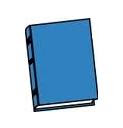Preparing water for human consumption when the quality of that water is unknown or considered unsafe generally requires two basic steps. It should first be filtered and then it will need to be purified by either a physical or a chemical means. This will insure that you have the safest and best quality water for consumption in order to avoid any possible contamination that could cause harmful effects or disease.
Filtering Water
Filtering your water can be done in any one of several different ways and by using a wide variety of materials. Cloth, mesh screens, sand filters and carbon filters are all decent materials that can be used to make a water filter. The main purpose of filtering is to remove suspended particles, some chemical contaminants, heavy metals and certain microbes. Always filter first and then purify your water.
Physical Purification
After completing the process of filtering your water, your water will still need to be purified to make sure it is as safe as possible before consumption. Unless you have used a filter of at least 0.2 microns or smaller that will remove possible bacterial contaminants like Cryptosporidium and Giardia, your water will still need to undergo a purification process. If your water is cloudy, you will need to allow it to settle for at least 30 minutes. The clear water can then be siphoned off for proper filtering. This will also extend the life of your filters. If needed, you can perform additional filtering until your water becomes clearer.
Boiling your water is the safest, easiest and most widely recommended purification technique that will effectively kill disease causing organisms. You will need to boil your water for at least 5 to 10 minutes and then allow it cool before use. If you are at a higher altitude, you will need to boil your water for several additional minutes.
Solar Water Disinfection (SODIS) is also another accepted form of water purification but will require strong sunlight. Placing your water into clear plastic PET bottles and exposing it to direct sunlight for at least 6 hours has been shown to be an effective method of purifying clear water. Cloudy water will not be purified and must be further filtered until it is clear and no longer turbid. Unless all the water has been exposed to the ultra-violet light from the sun, it will not be purified and may be unsafe for consumption.
Distillation is also considered a very safe process to use in purifying water and can be done with either a solar still or a stove top still. Both of these items can be easily made from common household items.
Chemical Purification
Chemical purification of your water means using different chemicals to purify your water. The most popular chemicals used are chlorine bleach, calcium hypochlorite and iodine.
Chlorine Bleach
Disinfecting with household bleach (plain and unscented) kills some, but not all, types of disease-causing organisms. Chlorine bleach is ineffective against Cryptosporidium but is partially effective against Giardia. After adding the proper amount of bleach solution to your water, stir well and let the water stand for at least 30 minutes. Double the amount of chlorine if the water is cloudy, murky or the water is extremely cold. After sitting covered to prevent further contamination for at least 30 minutes, the water should have a slight chlorine odor otherwise you will need to repeat the dosage and let the water sit for an additional 15 to 20 minutes.
Here are the currently accepted treatment amounts required when using bleach to purify your water. The amount needed will depend upon the percentage of chlorine available in your bleach which comes in varying strengths.
Percentage of Available Chlorine Number of Drops per Gallon
1% 40 Drops
4-6% 8 Drops (1/8 Teaspoon)
7-10% 4 Drops
Calcium Hypochlorite
Calcium hypochlorite is also another accepted chemical that can be used for water purification. This is also known more widely as “pool shock” and will need to be the plain variety that doesn’t contain additional chemicals for the treatment of algae or fungus. Due to it stronger concentration, you will need to make a purifying solution first. Simply dissolve one level teaspoon of granular calcium hypochlorite (approximately 1/8 ounce) in one gallon of water to make a disinfecting solution that will be roughly equivalent to a gallon of bleach.
Iodine
Add 5 drops of 2% iodine to every quart of clear water; add 10 drops if the water is cloudy. Let the solution stand for at least 30 minutes.
Water will be a necessity in any survival situation or crisis and knowing how to properly treat your water to make it safe for consumption is essential. During a disaster or crisis situation you should automatically regard all water sources as contaminated. Never assume the water is safe because this could create even more problems than you may already be facing. It is also best to avoid using any water if its appearance is bad or it is extremely foul smelling. Look for a better source of water. Remember, it’s best to always filter and purify any water that will be used for consumption.
Staying above the water line!
Riverwalker
























